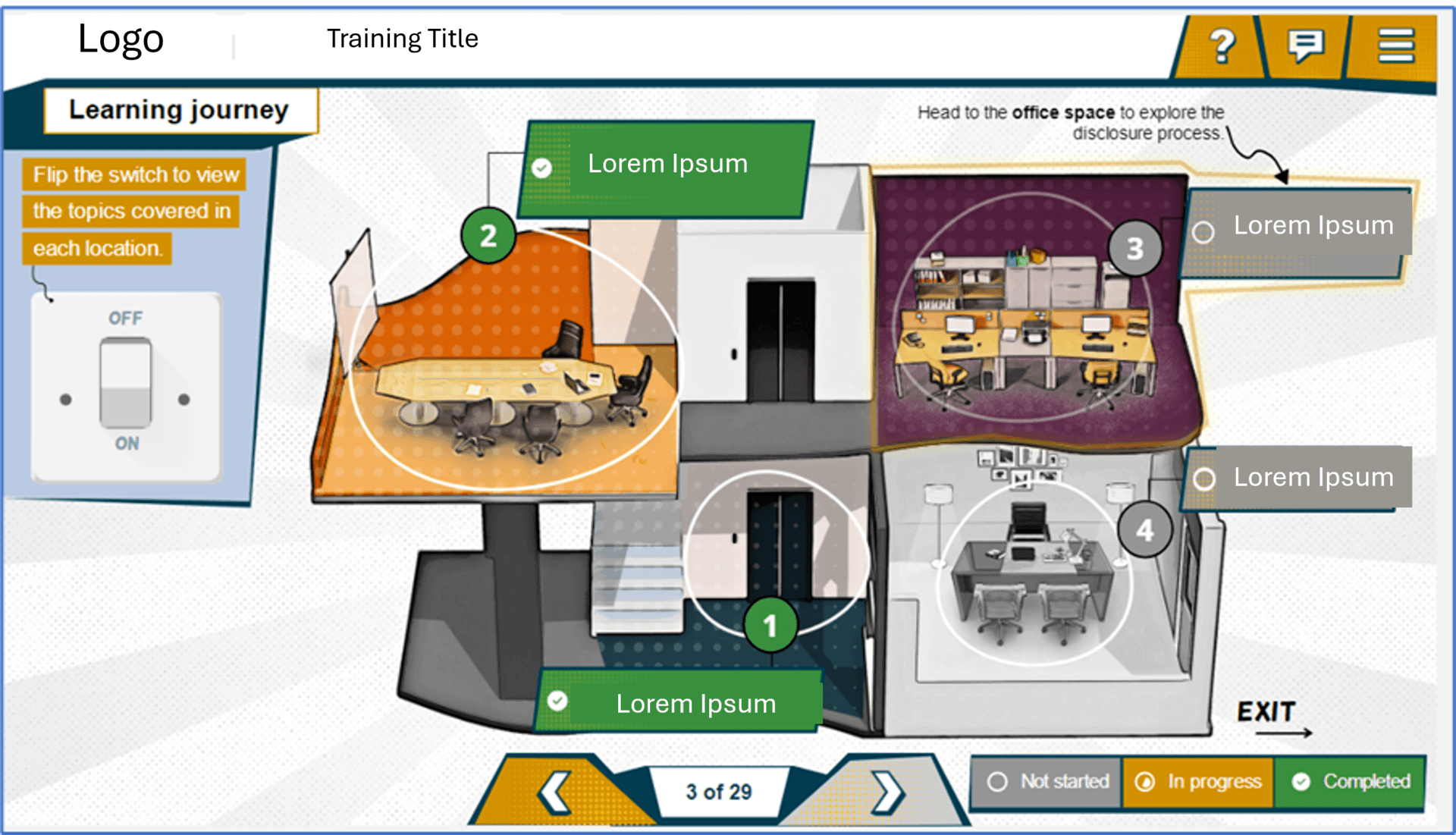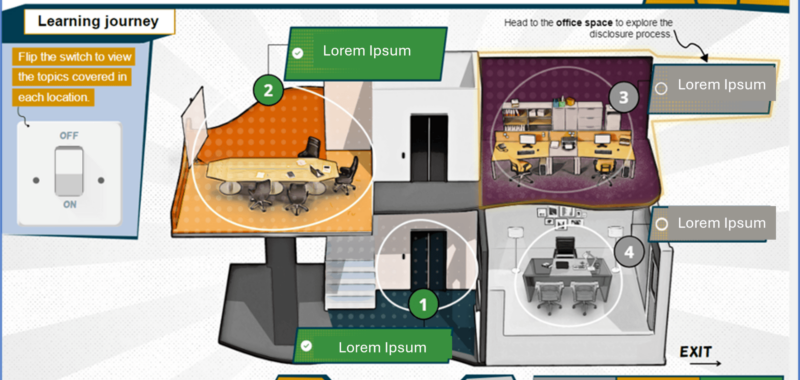The Role Of L&D In The Aviation And Airlines Industry
Training needs in the aviation industry are shifting, underscoring the need for L&D to equip employees with specific skills that can enhance workforce competencies and add value to overall organizational efficiency.
Empowering Aviation And Airline Industry’s Transformation Through L&D
Jack Welch, former CEO of General Electric, emphasized that an organization’s ability to learn and swiftly apply those learnings is its greatest competitive advantage. This insight is highly relevant to the aviation industry, where skill-based organizations leveraging personalized, data-driven learning can drive measurable impact, especially in today’s challenging landscape.
How can L&D empower the transformation of the aviation industry? Here are a few methods:
- Supporting new revenue models – Targeted skill development for employees to adapt to and engage with innovative business strategy models, enabling them to capitalize on new market opportunities and support new revenue streams.
- Fostering customer-centric skills – Training focused on building communication and emotional intelligence, including empathy, active listening, and problem solving to improve understanding of customer needs and using digital tools for personalized, high-quality customer service that enhances satisfaction and loyalty.
- Enhancing operational efficiency and sustainability – Equip employees with critical skills in process optimization, lean methodologies, and advanced technologies, L&D enhances efficiency. Additionally, training in eco-friendly practices, resource management, and green technology adoption fosters sustainability and environmental responsibility.
- Preparing the workforce for future challenges – Prepare the workforce for future technological advancements through continuous upskilling in emerging technologies, such as AI, data analytics, and automation. Foster a growth mindset and resilience to adapt to the rapid industry changes, navigate uncertainties, and remain competitive.
Optimizing Aviation Performance Through Future-Ready Skilling
Tailored training in safety procedures, technical skills, and streamlined maintenance can address aviation’s specific operational needs, driving performance and efficiency. Future-focused skill development in these areas ensures a workforce ready to meet evolving industry demands.
Key customized training programs the aviation and airline industry must focus on:
- Compliance training – To ensure employees understand and adhere to international regulations, industry standards, and internal policies, reducing the risk of violations and fostering an ethical workplace culture.
- Technical training – To equip employees with specialized skills and knowledge needed to perform specific tasks or operate complex systems and tools, such as managing flight equipment and digital systems.
- Soft skills and customer experience training – To develop interpersonal abilities such as communication, empathy, and conflict resolution for improved customer interactions, stronger relationships, and enhanced customer loyalty.
- Leadership and operations training – To develop leadership skills, helping managers to effectively lead teams, manage complex operations, and drive performance by focusing on areas like team management, operational efficiency, decision-making, and resource allocation.
- Behavioral training – To shape positive workplace attitudes, developing a safety-first mindset, adaptability, conflict resolution, reducing human error, supporting sustainability, and enhancing customer trust.
- Cross-cultural training and DEI – To equip employees with the skills to better understand and respect cultural differences, mitigate unconscious bias, work effectively across borders, and promote an inclusive work environment where diverse perspectives are valued.
Innovative Learning Strategies For The Aviation And Airlines Industry
The rapid advancements in technology, increasing regulatory demands, and a heightened focus on safety and sustainability, are necessitating the implementation of innovative learning strategies in the aviation industry.
Some useful strategies to ensure employees in the airlines industry remain skilled and capable of adapting to new operational challenges while enhancing customer experiences, include:
- Scenario-based learning – Improves decision-making and problem-solving skills during critical incidents by immersing employees in realistic, high-pressure situations that mirror real-world challenges, such as emergency responses or complex maintenance procedures.
- VR-enhanced immersive learning – Accelerates skill development for improved retention performance in high-stakes situations, using life-like, interactive simulations, such as cockpit operations, emergency evacuations, ground handling, and aircraft maintenance, in a risk-free environment.
- Advanced simulations – Allows employees to practice critical skills and decision making in a safe and controlled setting through high-fidelity simulators that mimic various operational scenarios, including flight operations, air traffic control, equipment handling, and safety.
- Roleplay for customer service – Simulates customer interactions to enhance communication skills, develop empathy, improve emotional intelligence, resolve issues effectively, and deliver exceptional service in real-world situations.
- Just-in-time learning – Provides employees with on-demand, targeted, and relevant microlearning modules precisely when they need them, facilitating on-the-job training and reducing knowledge gaps.
- Behavioral change training – Leverages data to equip employees with new behaviors such as safety, teamwork, and operational efficiency through modern tools and techniques for better alignment with organizational goals.
Measuring The ROI Of L&D In Aviation
Measuring the ROI of L&D in aviation is crucial for demonstrating tangible benefits amid industry shifts toward sustainability, technology upgrades, and regulatory compliance. This assessment helps justify investments and optimize resources to meet evolving operational demands and environmental standards.
Key areas for ROI calculation often include:
- Operational training metrics – To identify areas of improvement, streamline operations, and enhance overall performance by evaluating the effectiveness of business processes on parameters such as reduced incident rates, faster onboarding, and efficiency.
- Customer experience – To measure customer feedback for improved customer satisfaction scores (e.g., Net Promoter Score) and service quality that result from enhanced employee skills, retention rates, and applied behaviors.
- Retention and recruitment – To analyze the impact of training on engagement scores, attracting top talent, and reducing employee turnover rates, as higher retention reduces recruitment and onboarding costs.
- Compliance and safety – Evaluate reductions in accidents, incidents, and compliance violations, as well as adherence to safety regulations specific to the aviation industry.
Case Study: Enhancing Compliance Awareness Through Conflicts Of Interest Training
Objective
A large airline company required a conflicts of interest training module to ensure that all employees are able to recognize possible conflicts of interest and appreciate fully how any such issues need to be disclosed in order to reduce legal exposure and protect the image of the organization instead of further tarnishing it due to such incidents.
Solution
In order to meet this significant gap in knowledge concerning conflicts of interest, we created an extensive online training module. This module provides insights into various types of conflicts, real-world scenarios, and the disclosure process specific to the organization. The training incorporates an engaging comic book theme and interactive elements to ensure a dynamic learning experience.
Key Features
- Illustrative comic book design to simplify complex concepts
- Context-setting introduction with an example to highlight the importance of conflict disclosure
- Interactive office map navigation that enhances engagement
- Scenario-driven case studies for practical application
- Knowledge tests throughout the course to reinforce learning
Implementation
The training module was deployed as part of the annual conflict disclosure process, ensuring timely relevance. Employees received emails prompting them to complete the training online, supported by reminder communications. The timing of the training coincided with the disclosure requirement, facilitating immediate application of learned concepts.
Impact
The training module achieved a remarkable 98% completion rate, with 7059 out of 7203 employees participating. Post-training disclosures indicated a significant increase in awareness, as more employees reported ongoing conflicts that had previously gone unnoticed. The increase in inquiries related to conflicts of interest post-training demonstrated a heightened awareness among staff, reflecting the program’s success.


Read More:

EI
EI is an emotionally intelligent learning experience design company that partners with customers in their Digital Transformation journey.

